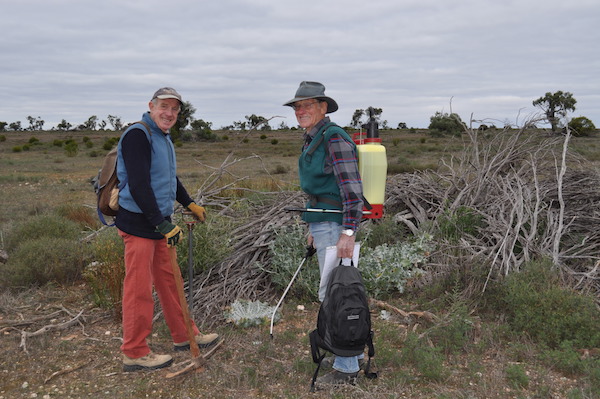Moorunde Wildlife Reserve consists of almost 7,000 hectares of mallee country, located between Blanchetown and Swan Reach on the south side of the Sturt Highway. Prior to establishment as a wildlife sanctuary, the land had been cleared for sheep grazing, wood fuel and charcoal production.

Moorunde Wildlife Reserve was established in 1968 after the Natural History Society raised money through public appeal to purchase two sections of Portee Station near Blanchetown. These sections totalled about 2,000 hectares. The land was purchased and fenced and some water was provided via tanks and ponds. The re-establishment of vegetation denuded by sheep grazing was monitored by Society members over the following 40 years. We estimate that in 1968 there were approximately 150 wombats on the reserve while the current estimates are 500-600 southern hairy-nosed wombats on this original section of the reserve.
Read a Newspaper Article from The Canberra Times, 23 May 1968, about the public appeal and establishment of the Moorunde Wildlife Reserve.
In 2006, an opportunity arose to purchase more sections of Portee Station. This time, with some bequests in the bank, the Society had a significant proportion of the required money. Donations from the Society’s patrons, John and Mary Holt, members, and like-minded organisations allowed us to purchase a further 4,900 hectares of sheep country adjacent to the existing original Moorunde reserve. We conservatively estimate that there are around 2,000 wombats on the expanded 6,900 hectare Moorunde Wildlife Reserve.
Watch a Visual Presentation on the history of Moorunde Wildlife Reserve narrated by Glen Taylor.
Read a Radio Program Transcript about Moorunde by Peter Clements, broadcast on ABC Radio.
Volunteer rangers regularly patrol the fences. Volunteer working bees during our Volunteer Working Bees also maintain the reserve and its biota, removing weeds and repairing tracks and damaged fences. Research projects are ongoing including monitoring wombat populations, DNA analysis of wombat scat to determine the species of plants they eat, recovery of flora and monitoring of grazing pressures from all fauna on the reserve.

Weed spraying during a Volunteer Working Bee weekend at Moorunde.
